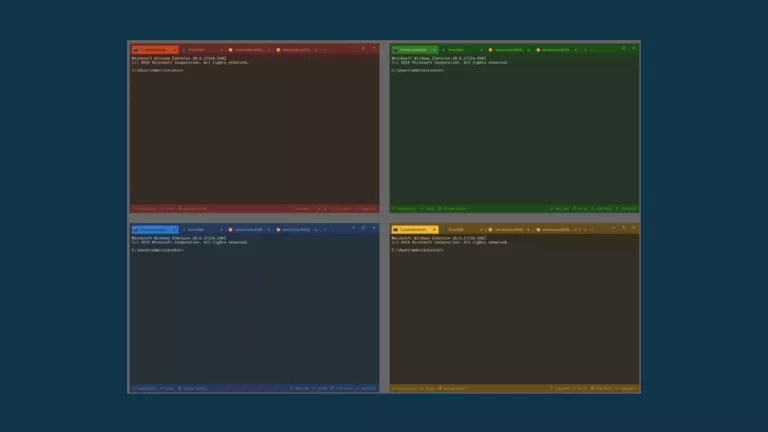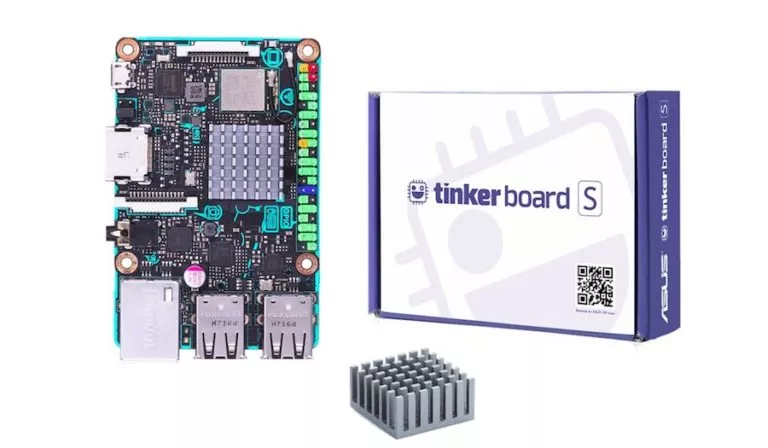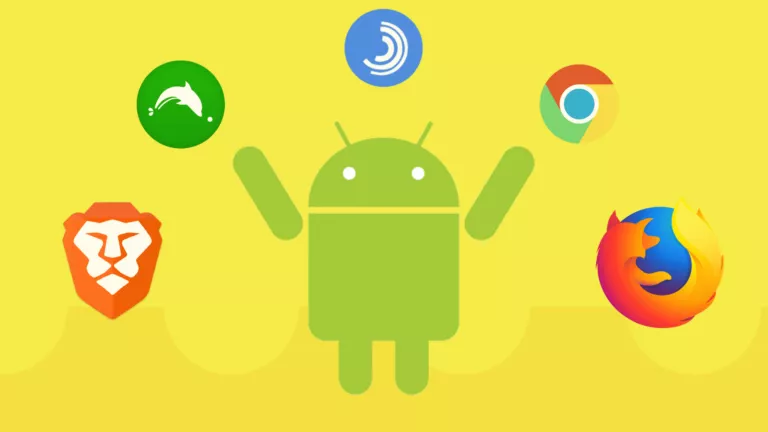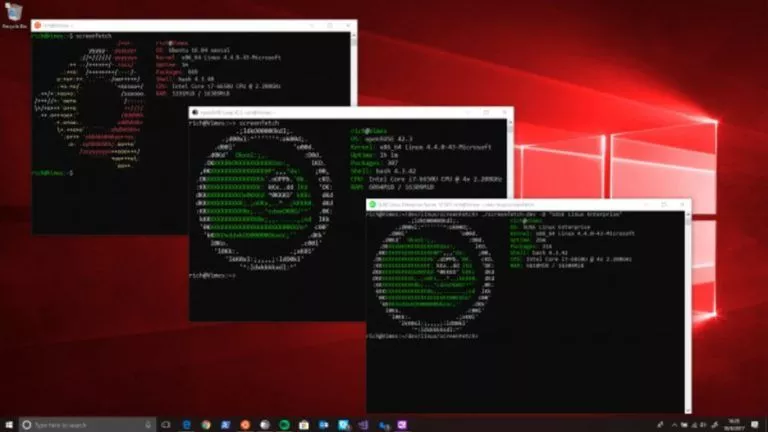22 Important Things To Do After Installing Linux Mint 19

Linux Mint is a popular distro in the Linux community. Owing to the Windows-like UI and a fairly easy learning curve, Linux Mint has been able to generate a decent amount of fan following. Moreover, the availability of all the essential apps which come pre-built with the Linux Mint Installation makes it especially preferable for beginners in the Linux world.
We have already covered the complete tutorial on how to install Linux Mint 19, which is the latest Linux Mint version available. So if you have already followed the steps to install it, the next thing on your mind would be what to do after installing Linux Mint 19. So, have a look at our most important 10 things to after Installing Linux Mint Tara.
Things to do after Installing Linux Mint 19 Tara
Linux Mint Cinnamon is one of the more popular desktop environments around. But here, we are using the Linux Mint 19 MATE edition to freshen things up a bit. So, let’s use that edition to look at the important things to do right after you install this popular Linux distribution. If you are having a tough time choosing the best Linux desktop environment, check out our article on Linux desktop environments.
1. Welcome Screen
The Welcome screen is the first thing that greets you when you boot up your Linux PC. Furthermore, it can be a very helpful tool to get things up and running for the first time. There are links to help and documentation as well.
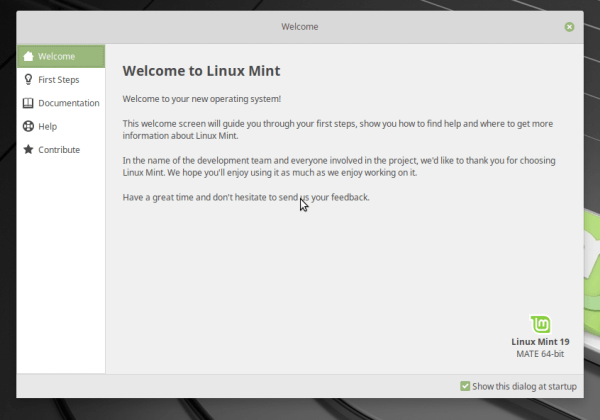
2. Check For updates
First things first, check if your machine is running the latest components and features provided. Even though you might be sure that you have installed the latest version of Linux Mint, some fixes and additional security features may have been released already. Owing to the brilliant support for the Linux community, regular updates are a thing.
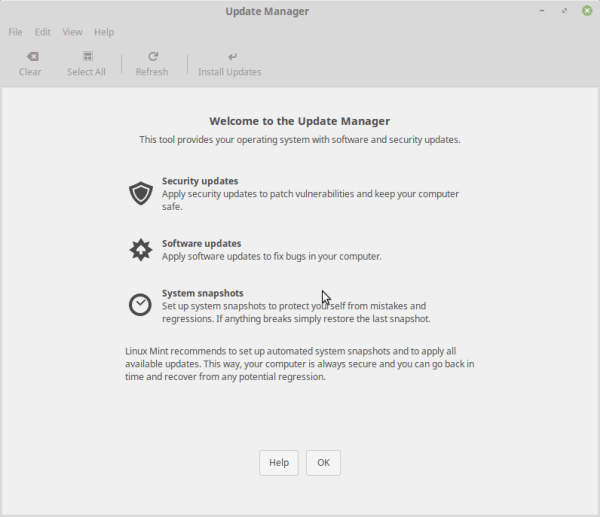
To make sure that you have the latest libraries and packages for your Linux OS, launch the terminal from the menu or using the shortcut key Cntrl + Alt + T and enter the following command.
$ sudo apt update && sudo apt upgrade -y
Or, you can launch the Software Updater instead.
3. Optimize Linux Mint Update Servers
If you notice dreadfully slow updates on a fast internet connection, the most probable cause would be slow servers. A good option to try out in such situations is to switch to a closer mirror server. Eventually, this might yield better results in most cases.
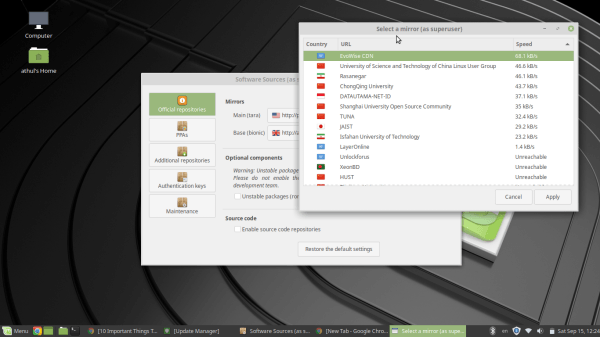
To change to a faster mirror server,
- Launch the Update Manager and got to Edit > Software Sources > Mirrors.
- Firstly, change the server for Main(Tara) by clicking on the current server and choosing the appropriate one in the forthcoming window.
4. Install Missing Graphic Drivers
Linux Mint might not be the go-to OS for gamers. Nevertheless, installing the latest graphics drivers is one of the first things you should do after installing Ubuntu or any other Linux distributions.
You might already know that most drivers come pre-built in the Linux kernel. Due to the dependency on proprietary restricted drivers, graphics drivers like Nvidia and some printers are the only exceptions.
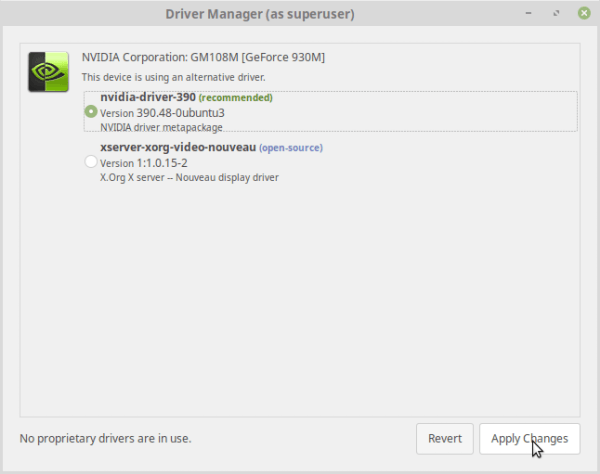
To update/install graphics drivers on Linux Mint,
- Launch the Driver Manager from the start menu > Driver Manager.
- In the driver manager window, you can choose whether to install the closed source proprietary software or open source xorg.
- Installing the proprietary graphics driver is the recommended one in the list and just as it reads, that would be the preferable one.
5. Install complete Multimedia Support
If you have followed our article on the complete Linux Mint 19 installation, you might remember the option to choose whether to Install third-party software for graphics and Wi-Fi hardware, Flash, MP3, and other media. Choosing this option would have already installed the necessary multimedia codecs and plugins.
If you didn’t, no problem! You can do that now.
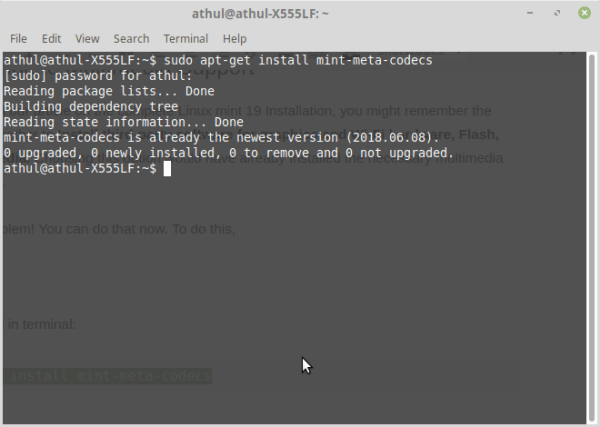
To do this, eEnter the command in terminal:
sudo apt-get install mint-meta-codecs
6. Install Microsoft Fonts
Additionally, you can install the Microsoft fonts in the Linux. You can use the Linux Software Manager or the Synaptic package manager to do so.
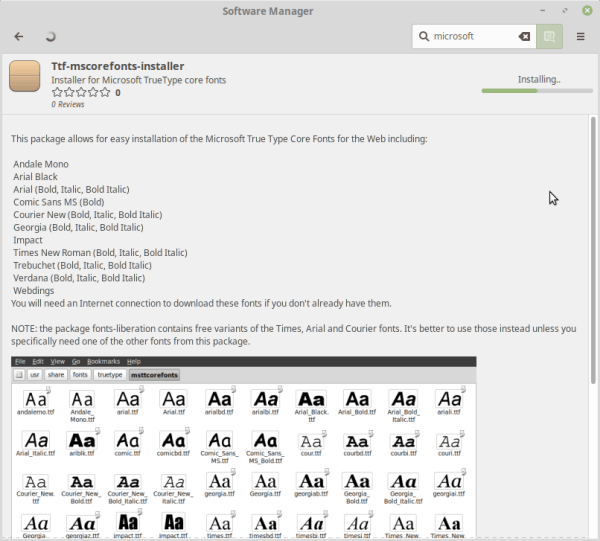
- Launch the software manager by going to Menu > Administration > Software Manager.
- Type in Microsoft and select Ttf-mscorefonts-installer.
- Click Install.
7. Install the Popular and Most useful software for Linux Mint 19
Even though one might notice a few major software titles missing, almost all the popular software has Linux support. To help you get started, we will recommend a few free Linux Mint Software here:
- Google Chrome ( Web Browser )
- Audacious ( Audio Player )
- VLC ( Video Player )
- Skype ( Instant Messaging and Calling )
- Libre Office ( Office Suites )
- GIMP ( Photo Editor)
- ATOM ( Text Editor )
- uGet ( Download Manager )
- Transmission ( Torrent manager )
- DropBox ( Cloud Storage )
8. Create a System Snapshot
Snapshot feature in Linux Mint might not be as familiar to the users. Linux Mint Snapshots allow the users to create System Restore images so that in case something goes woefully wrong, you can always switch back to the state when everything was well. This Timeshift feature is integrated with the update manager and users can find much-needed utility with it.
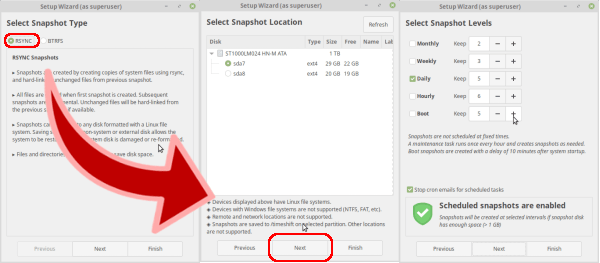
To create a system snapshot,
- Launch Timeshift by going to Menu > Administration > Timeshift.
- Choose RSYNC as the Snapshot type.
- Select the device where you want the snapshot to be saved and click next.
- Select the time when a snapshot needs to be created.
- Click Finish.
9. Disable Startup Applications
Just like with Windows, Linux Mint also has some applications which start up automatically. Additionally, you speed up the system startup and boot up by disabling some of the startup applications.
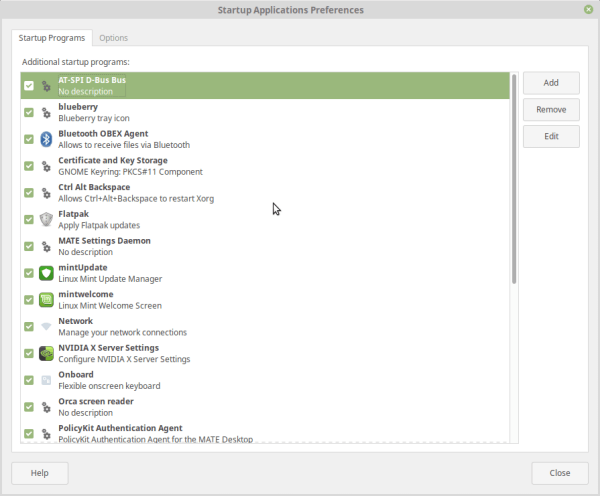
To do this, head over to
- Menu > System Tools > Startup Applications.
- In the Startup Application Preferences, you can disable, add or remove the programs.
- Disabling prevents them from starting up automatically.
- Removing removes the entry from the list.
- Furthermore, you can use the Add function to add the program again to the list.
10. Optimize Linux Swap Usage (optional)
First of all, Swap memory is the backup memory partition utilized from the Hard Drive when the RAM memory runs out. As you should know, the hard drive is several times slower than the RAM. Therefore, as the swap usage increases, the overall system performance decreases. To mitigate this, we can instruct the PC to decrease its swap usage.
Note: Most probably, this tip would only be helpful for users with 2GB or less RAM. So, If you run a modern machine with 4GB or more, you need not bother and can skip this step.
Now, the setting called Swappiness determines the swap usage by the system. To decrease this,
- First of all, check the current swappiness settings by entering the following in the terminal:
cat /proc/sys/vm/swappiness
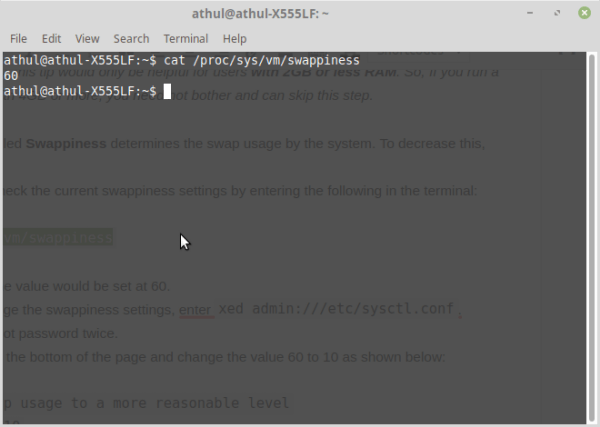
- By default, the value would be set at 60.
- Now, to change the swappiness settings, enter
xed admin:///etc/sysctl.conf. - Enter your root password twice.
- Now scroll to the bottom of the page and change the value 60 to 10 as shown below:
# Decrease swap usage to a more reasonable level
vm.swappiness=10
- Restart and check the value again.
11. Use Synaptic Package Manager
The Synaptic package manager is a very popular software manager for Ubuntu and Linux Mint. This great Linux software tool is used in almost all Debian distributions. For the reason being its ease of use and many benefits, it goes well beyond the shortcomings of the Ubuntu Software Center and Linux Mint Software Manager.
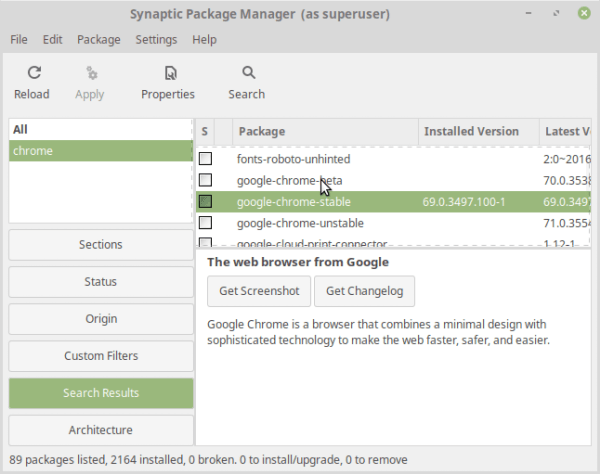
Note: Keep in mind to not to mess around with it if you don’t know what you are looking at. Removing essential packages can result in the unwanted behavior of the apps and the whole operating system.
12. Configure your Firewall Settings
The Linux Operating system is well known for its security and protection. Even more, improving security in every possible way possible is always recommended for this day and age. Moreover, enabling Linux Firewall would be a good place to start. Consequently, the firewall is called Uncomplicated Firewall (ufw).
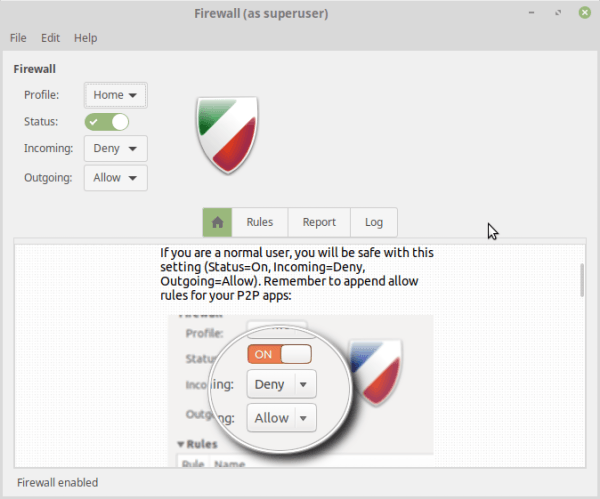
Additionally, the firewall can be accessed via the terminal or by using the Firewall settings in the Main menu.
13. Remove Mono and Orco ( Optional )
This is an optional step. Probably, people who are a tad bit concerned over the regular users would find this helpful. Nevertheless, we decided to include it as it has been reported to for additional security.
To begin with, Mono and Orco are two packages which come preinstalled with Linux Mint 19. For the reason that, Mono is an implementation of the Windows .NET framework, it can pose a potential security risk. In contrast, Orco is an accessibility feature which can be discarded unless you are visually challenged.
So you can choose to uninstall them both by using the terminal command:
sudo apt-get remove mono-runtime-common gnome-orca
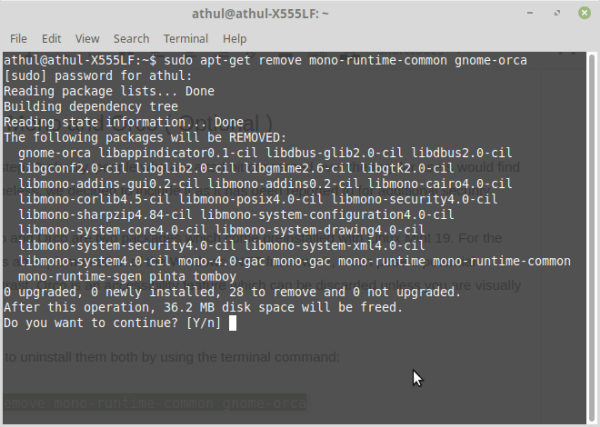
Note: Removing Mono will also remove the mono based applications like Tomboy notes app and photo editor apps like Pinta. So, if needed, you need to install an alternative application.
14. Configure Power Manager
Another thing you need to do after installing Linux Mint 19 on your laptop is to configure the power manager settings. Maybe it won’t make much of a difference in your desktop machines. Certainly, this can do wonders for the laptop machines if you manage to get it right.
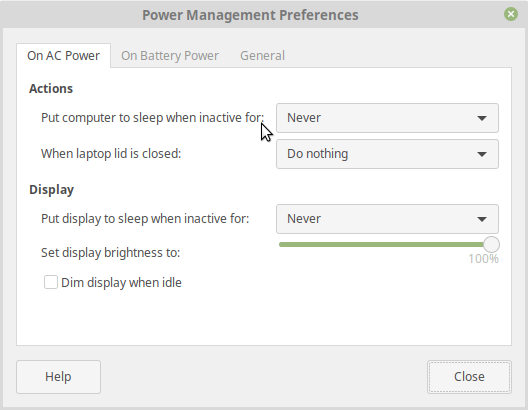
Access the Power Manager Settings to verify the configurations.
15. Improve Battery by installing TLP for Linux
TLP is a great command line tool for improving the battery performance for your laptop running Linux mint 19. This advanced power management tool comes with automated background tasks which can help you get the most out of your battery.
To install TLP in Linux Mint 19,
sudo add-apt-repository ppa:linrunner/tlp sudo apt-get update sudo apt-get install tlp tlp-rdw sudo tlp start
Most noteworthy is that the default settings would be the recommended one and you can be safe to assume that it would do well enough.
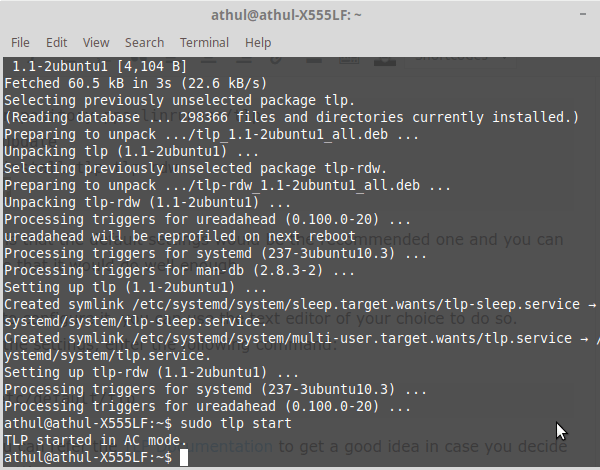
Still, if you want to configure it, you can use the text editor of your choice to do so. Hence, To tweak the settings, enter the following command:
sudo gedit /etc/default/tlpConsequently, you can refer the TLP Documentation to get a good idea in case you decide to configure the settings.
Note: Always be cautious when trying out the different settings as effects may vary depending on the machine hardware.
16. Snap or Flatpak
Snap and Flatpak are highly acclaimed as the future of software packaging for Linux and for good reason as well. Linux Mint comes pre-installed with the Cross-distribution software utility Flatpak.
Likewise, you can also try out the similar package called Snap which is developed by Canonical and comes built-in with Ubuntu.
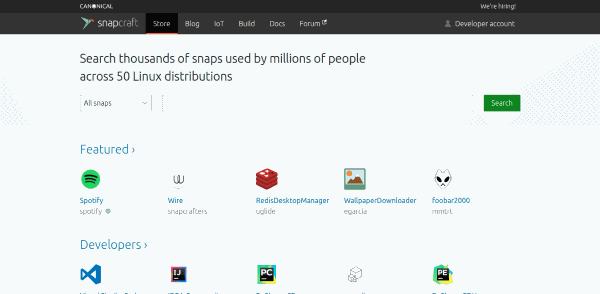
To install snaps, Launch the terminal and enter the following command,
sudo apt install snapd
Even more, both Snaps and Flatpak has its pros and cons and we will let you be the judge on what suits you best as you begin to try them out.
17. Customize the Look and feel of Linux Mint 19
Above all, the best thing about Linux is the power of customization. If you find Linux Mint less pleasing on the eye, you can always take it up a notch. There are tons of themes and icon packs available for you to try out. Installing them are pretty easy as well.
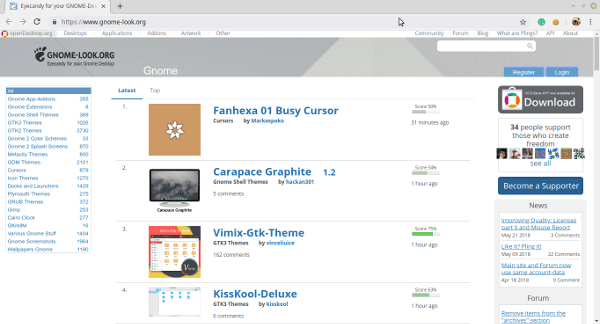
Head over to gnome-look.org to have a look at the best themes available.
18. Play Games on Linux Mint 19
While everyone knows gaming isn’t one of Linux’s forte, times have certainly changed and currently, Linux holds many of major titles in its arsenal. Even though not as great as the Windows platform, you can definitely have a good time playing several games in Linux Mint 19.
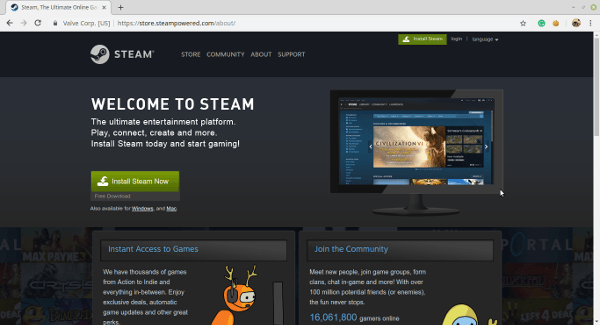
Especially, taking the Steam client into consideration, you can play a wide range of major titles quite well. Gaming in Linux is now much more optimized owing to the optimized graphics drivers and games optimized just especially for Linux.
19. Install Wine and Play On Linux
Most notable software for Linux users coming from Windows is undoubtedly WINE. WINE stands for Wine is not an Emulator. Seems pretty self-explanatory, doesn’t it? Above all, wine helps you efficiently run Windows applications on Linux.
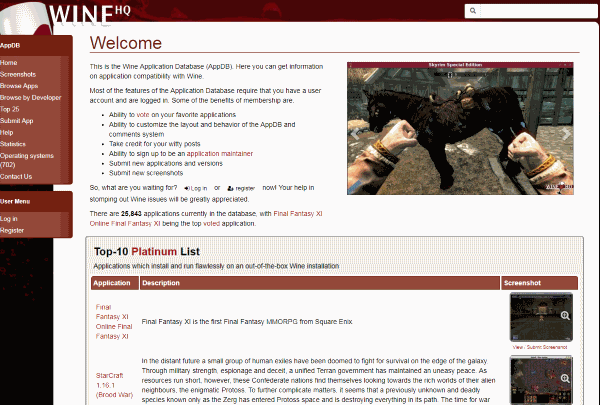
To install Wine, Launch the terminal and Enter the following command.
sudo apt-add-repository 'deb https://dl.winehq.org/wine-builds/ubuntu/ bionic main'
If you want to install WINE stable version:
sudo apt-get install --install-recommends winehq-stable
For WINE development version:
sudo apt-get install --install-recommends winehq-devel
Furthermore, if you want to install WINE staging version:
sudo apt-get install --install-recommends winehq-staging
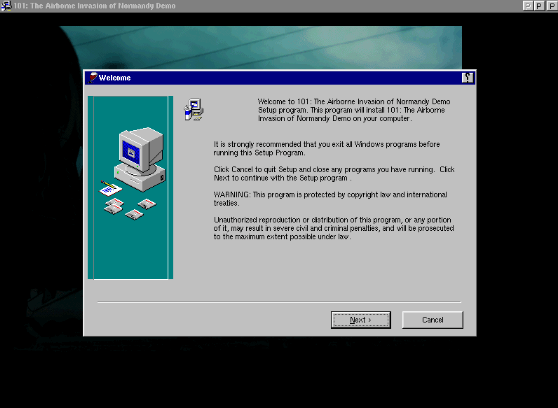
Additionally, you can install PlayOnLinux from the Software manager to enjoy playing some Windows games on Linux.
20. Enable Redshift
Almost all the digital platforms have implemented the night light feature which filters the blue light enabling you to get some good sleep. As you may have already found that feature in smartphones and Windows, Redshift brings a yellow tint to the screen during the night hours for the night owls among our users.
To enable Redshift,
Launch Redshift from the menu or from the taskbar and set it to Autostart and Enabled.
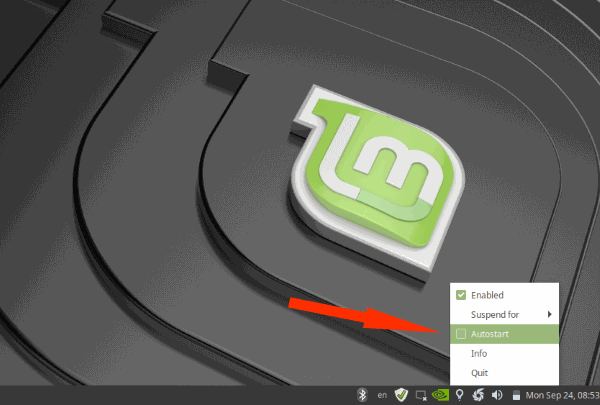
If you can’t find it in the taskbar, search in all apps.
And as simple as that, you have given your health some good service.
21. Useful Tweaks For Linux Mint 19
After using Linux Mint 19 for a short while, there are some settings that you would definitely want to implement. We can show you how.
Amplify Volume Output
In Linux Mint 19, you can easily amplify the volume output to 150% with a simple setting.
- Firstly, access the sound preferences via right clicking on the sound menu in the panel or in General settings.
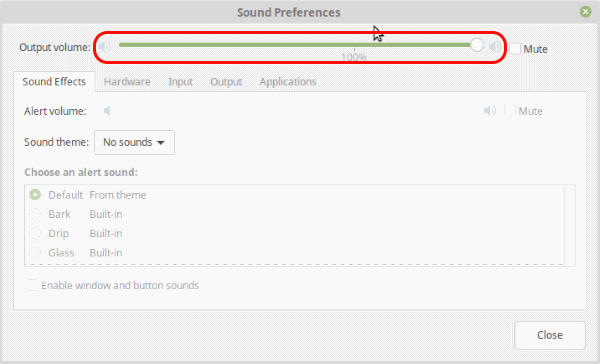
- Now, go to the Advanced Tab, you can use the slider under Amplification to set the maximum volume output.
Display Battery Percentage
Besides, if you are one of those people who would like to see the battery percentage right on the screen at all times, you can use this method.
- Access the Battery configuration settings by right-clicking the battery icon in the panel.
- Now, in the power manager, change the setting for display to Show percentage.
Automatically Turn on NumLock
Another Linux Mint 19 tweak that most would find helpful is to automatically turn on NumLock when the operating system boots up. First of all, you would have to install a package called numlockx. Hence,
- Open up the terminal and enter the following command and press enter:
sudo apt-get install numlockx
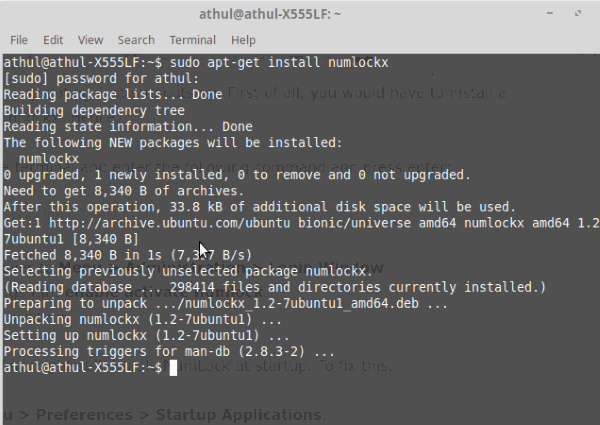
- Now, head over to Menu > Administration > Login Window.
- In the settings tab, enable activate numlock.
- Reboot your system.

However, Linux Mint might still disable NumLock at startup. To fix this,
- Go to, Menu > Preferences > Startup Applications.
- Click Add.
- Now, Set the Name to Numlockx and enter the command as sh -c “sleep 20 && numlockx on”.
- Click Add.
22. Clean Up your Linux System
Finally, we should take note to clean the system of any temporary leftover files and junk.
Launch the Terminal and enter the following commands:
To remove the packages that failed to install completely,
$ sudo apt-get autoclean
Additionally, to remove the apt-cache,
$ sudo apt-get clean
Finally, to remove the unwanted software dependencies,
$ sudo apt-get autoremove
Important Things To Do After Installing Linux
As we see, setting up your Linux machine after installing the Linux distribution is equally important and simple. Furthermore, you can check out our article to try out the new features in Linux Mint 19.
If you want to know more or you need help with any other Linux distributions after installing it in your system, feel free to use the comment section below.
Also Read: Linux Adopts A New Code Of Conduct


